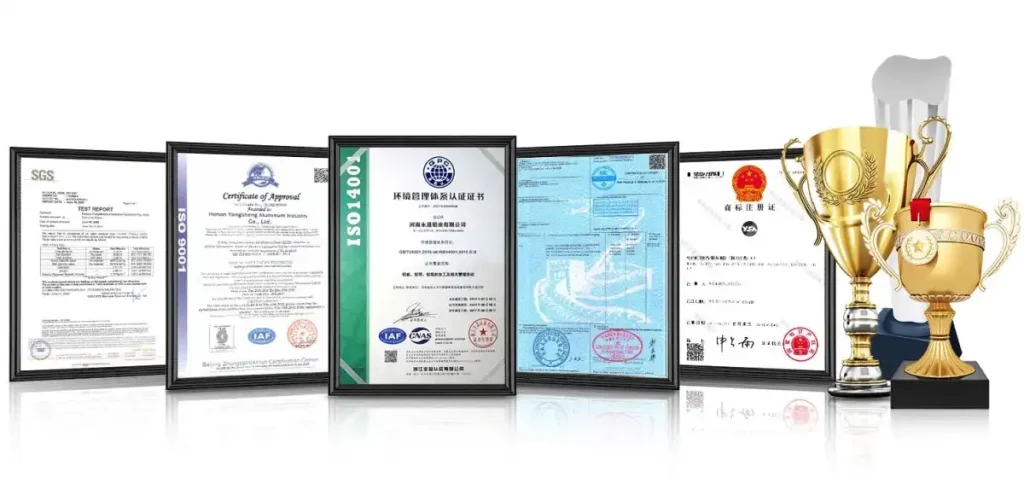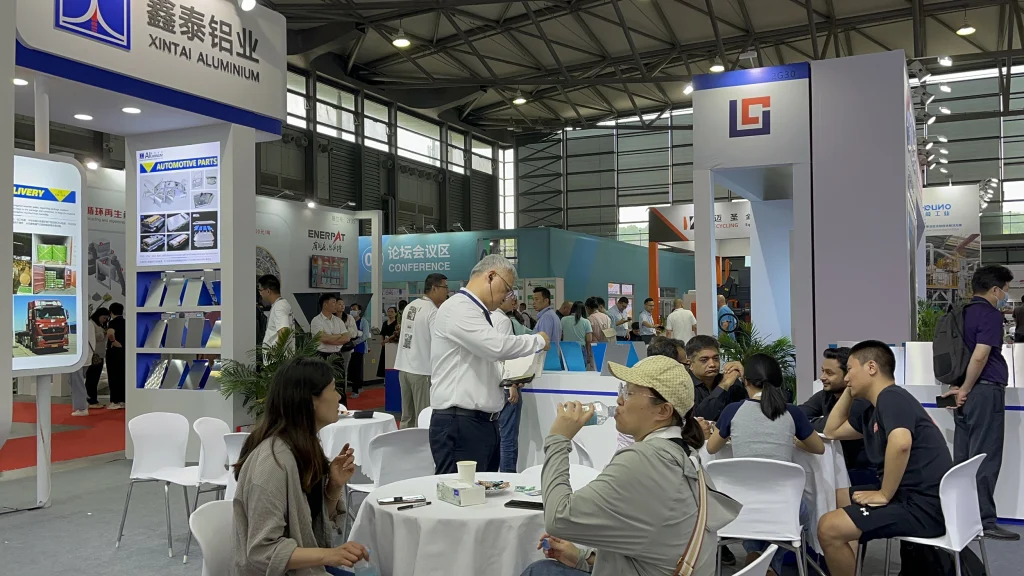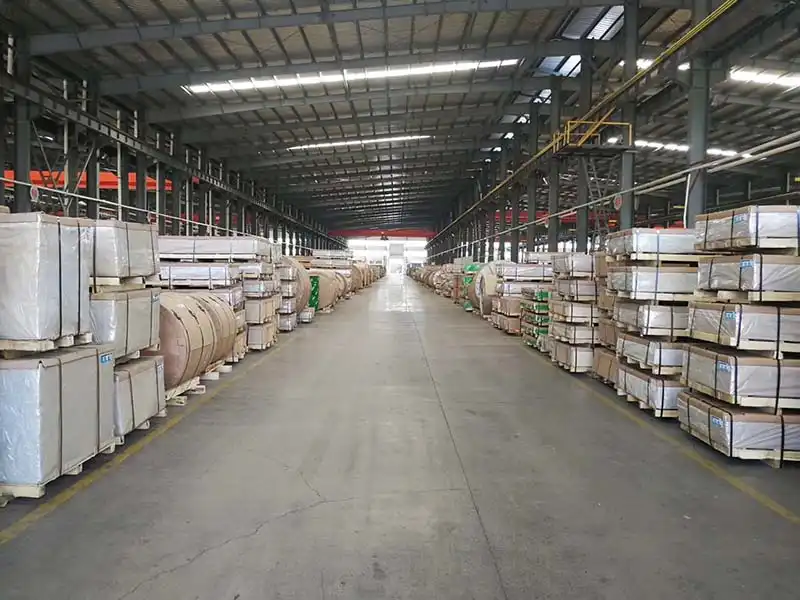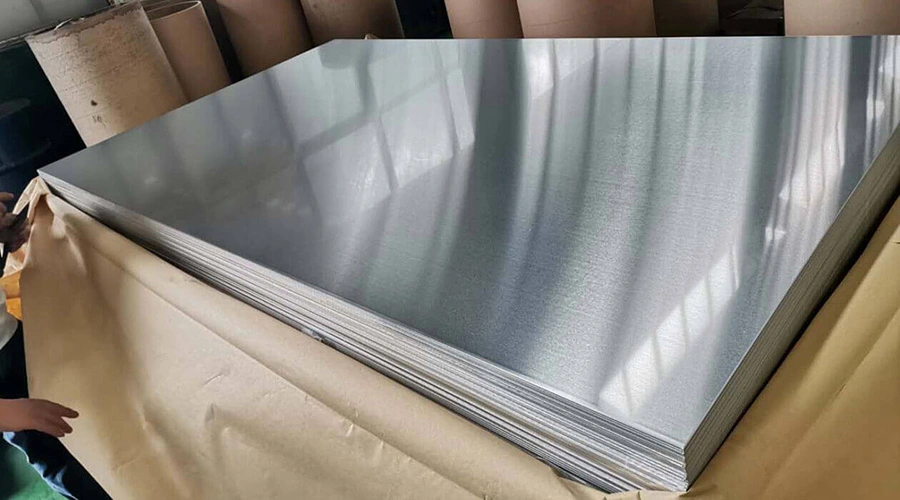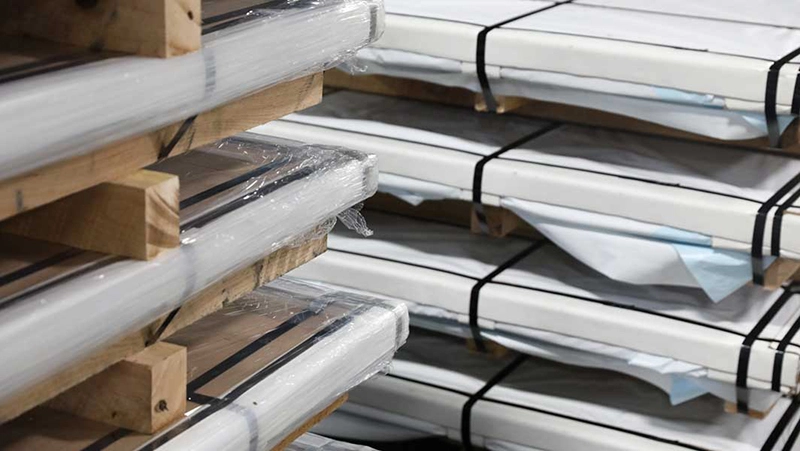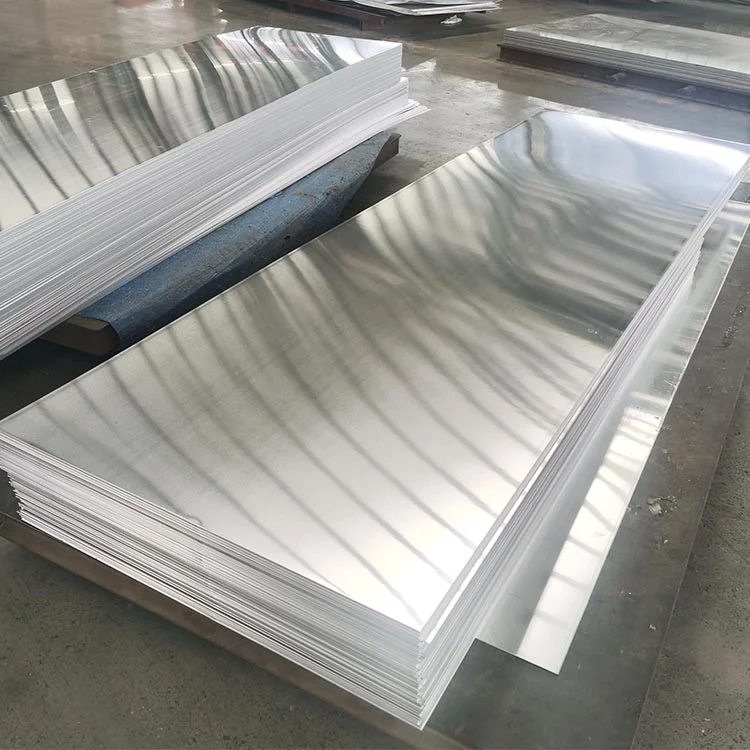Zur Herstellung von Aluminiumplatten wird zunächst Aluminiumerz verhüttet, um metallisches Aluminium zu gewinnen. Anschließend wird das Aluminium geschmolzen und in Brammen gegossen, die dann gewalzt, gestreckt und weiterverarbeitet werden. Die Grundlagen der Herstellung von Aluminiumplatten beruhen größtenteils auf Metallurgie und Metallverarbeitungsprozessen. Aufgrund seiner besonderen Eigenschaften wie geringes Gewicht, hohe Festigkeit, Wärmeleitfähigkeit, elektrische Leitfähigkeit, Korrosionsbeständigkeit und Plastizität werden Aluminiumbleche häufig in der Luft- und Raumfahrt, im Fahrzeugbau, bei elektronischen Geräten, im Bauwesen und in der Industrie eingesetzt. In diesem Beitrag erhalten Sie einige Anregungen, wo Sie hochwertige Aluminiumbleche erhalten können:
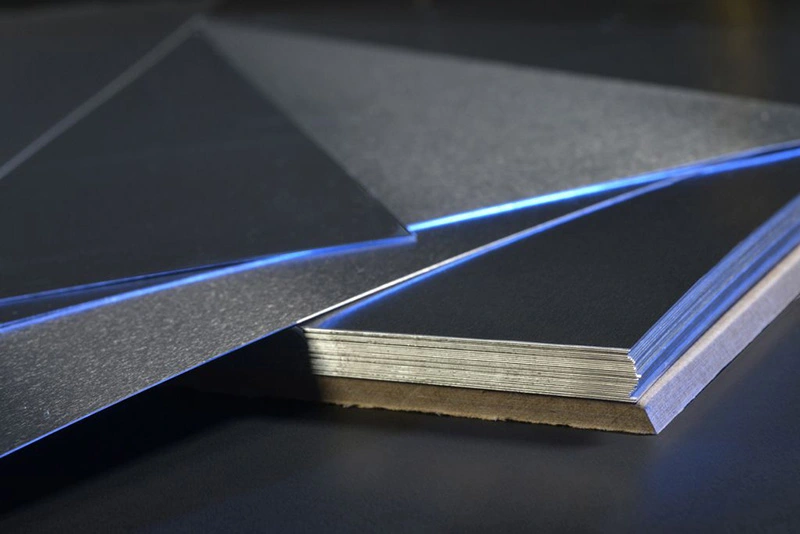
Know The Aluminum Plates :
Aluminiumplatten sind extrem haltbar und leicht, so dass sie einfach zu handhaben, zu transportieren und zu installieren sind. Wenn Aluminiummetall der Luft ausgesetzt ist, bildet es eine Oxidationsbarriere, die Rost und Verfall verhindert. Aufgrund seiner korrosionsbeständigen Eigenschaften sind Aluminiumplatten für den Einsatz in rauen oder feuchten Umgebungen geeignet. Außerdem verfügt Aluminium über eine ausgezeichnete Wärmeleitfähigkeit und kann Wärme effektiv an seine Oberfläche ableiten.
Types Of Aluminum Plates
Aluminiumplatten werden in 1-8 Serien eingeteilt. Jede Serie hat ihre eigenen Merkmale und Verwendungen. Unter ihnen, 1000 Serie Aluminium, 3000 Serie Aluminium, 5000 Serie Aluminium und 6000 Serie Aluminiumplatten sind häufiger verwendet, während 2000 Serie, 4000 Serie und 7000 Serie sind selten. Die Aluminium der Serie 8000 is is primarily found in the form of aluminum foil sheets. We won’t go into too much detail here. Explain briefly several common aluminum alloy series:
1000 Series Aluminum Plate: With a minimum aluminum metal composition of 99%, this series is also known as the pure aluminum series. They are soft and pliable, making them excellent for deep sketching or spinning applications.
Aluminiumplatten der Serie 2000: Eine Reihe von Aluminium-Kupfer-Legierungen mit hervorragender Ermüdungsbeständigkeit. Sie werden häufig in der Luft- und Raumfahrt verwendet.
3000 Series Aluminum Plate: Aluminum-manganese alloy series, with good formability and corrosion resistance. They are commonly used in the construction and automotive industries.
Aluminiumplatten der Serie 4000: Besteht hauptsächlich aus Aluminium und Silizium als Hauptlegierungselemente. Es hat eine hohe Festigkeit, insbesondere bei hohen Temperaturen, und kann dennoch eine gewisse Festigkeit beibehalten. Beim Schweißen müssen die richtigen Schweißverfahren und Legierungszusätze verwendet werden, um die Qualität und Leistung der Schweißverbindung zu gewährleisten.
5000 Series Aluminum Plate: Aluminum-magnesium alloy series with excellent corrosion resistance and weldability. They are commonly used in marine and transportation applications.
Aluminiumbleche der Serie 6000: Magnesium-Silizium-Legierungen mit guter Verformbarkeit, Schweißbarkeit und Korrosionsbeständigkeit. Sie werden häufig in der Bau- und Automobilindustrie verwendet.
Aluminiumblech der Serie 7000: Höherpreisige Aluminium-Zink-Legierungsserie mit ausgezeichneter Festigkeit und Ermüdungsbeständigkeit. Sie werden häufig in der Luft- und Raumfahrt und für Sportgeräte verwendet.
- YSA Hot-sale Aluminum Sheet Series:
- Serie 1000
- Serie 3000
- Serie 5000
- Serie 6000
Assessing Your Specific Requirements:
A. Determine Aluminum Sheet Thickness:
Consider the intended use: Determine the intended application and mechanical load requirements to determine the appropriate plate aluminium thickness. Aluminium plates of different thicknesses are used in different fields. Thin aluminum sheet can be used for lighting fixtures, household appliances such as refrigerators or microwave ovens, elevators, and automobile decorative parts; thick aluminum plate can be used for aerospace aircraft, military supplies, ship decks, etc. Thicker aluminum plates generally provide greater strength and load-bearing capacity.
B. Deciding On Aluminum Sheet Size:
Standardgrößen vs. Sondergrößen: Bestimmen Sie, ob Standardplattengrößen Ihren Anforderungen entsprechen oder ob Sondergrößen erforderlich sind. Standardformate sind leicht erhältlich und kostengünstig, während Sonderformate maßgeschneiderte Lösungen bieten.
Available Dimensions in the Market: Research the market to identify the range of plate dimensions available, such as length, width, and thickness options, the conventional size width and length of aluminum plates are 1050*2400mm, 1060*2400mm, 1100*2400mm, 1200*3800mm, and some ultra-wide aluminum plates such as widths above 1800mm can be customized and the length is within 8 meters. Common sizes of aluminum plates are:
- 4×8 aluminum sheet
- 1 8 aluminum sheets
- aluminum sheet 5mm
- 3 16 aluminum sheets
- 1 16 aluminum sheet
C. Optionen für die Oberflächenbehandlung:
Gefräste Oberfläche: Als einfachste Option haben walzblanke Bleche ein natürliches Aussehen mit einer glatten Oberfläche direkt aus dem Herstellungsprozess.
Polierte Oberfläche: Aus ästhetischen Gründen bieten polierte Oberflächen eine glänzende und reflektierende Oberfläche, die häufig für dekorative Anwendungen verwendet wird.
Anodized Finish: Anodizing alters the surface layer of the aluminum, enhancing its corrosion resistance and providing a range of color options. Anodized plates aluiminum are suitable when additional protection or a specific appearance is desired.
Selecting The Right Alloy:
Each series of aluminum alloys exhibits different properties based on its alloying elements. To determine the alloy, you must first understand the benefits and properties of each aluminum alloy series and evaluate the strength requirements, formability and corrosion resistance requirements of your application. For example, in terms of strength, the 6000 series contains strong alloying elements such as silicon, magnesium and zinc. It generally has higher strength than 5000 series aluminum alloys. It is also a widely used alloy series for industrial structural components. The 3000 series Al-Mn alloys have good corrosion resistance and weldability, and are commonly used in the manufacture of tanks, pressure vessels, and other applications. Although higher in strength than the 1000 series, they are still lower in strength compared to the 5000 and 6000 series aluminum alloys.
Assessing Aluminum Plate Quality:
Die Sicherstellung der Qualität von Aluminiumplatten ist für den Erfolg Ihres Projekts entscheidend. Berücksichtigen Sie bei der Beurteilung der Plattenqualität die folgenden Aspekte:
A. Zertifizierung und Standards:
ASTM Standards: Look for aluminum plates that comply with relevant ASTM (American Society for Testing and Materials) standards, ensuring they meet specific requirements for mechanische Eigenschaften, dimensions, and tolerances.
ISO Certification: Suppliers with ISO (International Organization for Standardization) certification demonstrate adherence to internationally recognized quality management standards, providing assurance of consistent product quality.
B. Materialprüfung und Inspektion:
- Appearance inspection: Visually inspect the plate for any surface defects, such as scratches, dents or irregularities, and observe whether the color of the aluminum plate is consistent, whether there are spots, bubbles or color differences, etc.
- Mechanical testing: Perform mechanical tests such as tensile strength, hardness, and elongation using equipment such as tensile testing machines, durometers, etc. to verify the mechanical properties of the material.
- Weather resistance test: Expose the aluminum plate to different environmental conditions such as high temperature, low temperature, humidity, etc., and observe whether corrosion or oxidation occurs on the surface of the aluminum plate.
- Dimensional inspection: Use measuring tools to check whether the dimensional parameters such as length, width, thickness and corner roundness of the aluminum plate meet your project requirements.
Evaluating Suppliers:
A. Suche nach seriösen Anbietern:
Check online networking platforms and industry forums for customer reviews and ratings of different suppliers, or seek advice from industry professionals or colleagues with experience working with aluminum panels to identify reliable suppliers.
B. Erfahrung und Fachwissen des Lieferanten:
Years in Business: Maybe you don’t understand this. There is actually no direct relationship between the number of years of establishment and the strength of the aluminum plate manufacturer. However, if the manufacturer has been in this industry for many years, then the professionalism of the aluminum plate factory must be much higher than that of a new factory.
Technical Support and Customer Service: The higher the production capacity and technical level of a supplier, the faster and more accurately it can complete the cutting work of various specifications and sizes. Good suppliers have strong enough technical strength and experience to provide customers with professional consultation and services and effectively solve any questions.
C. Anforderung von Mustern und Spezifikationen:
Sample Availability: Requesting samples from prospective suppliers can help you understand product specifications in advance, including alloy composition, mechanical properties, dimensions and surface finish, etc.
Comparing Prices And Cost Factors:
A. Preisunterschiede zwischen den Anbietern:
Research the market to understand the price range for aluminum sheets, compare prices from different suppliers, and ask about the biggest discounts or special pricing suppliers can offer when ordering in large quantities or on a long-term basis. This will generally provide a price advantage for high-volume orders.
B. Zusätzliche Kostenfaktoren:
There are shipping and handling costs to consider, especially when sourcing aluminum panels from international suppliers. Freight, customization, loading and unloading and other costs must be taken into account and cannot be calculated blindly.
Considering Lead Times And Availability:
Die rechtzeitige Verfügbarkeit von Aluminiumplatten ist entscheidend für die Einhaltung von Projektterminen. Bewerten Sie die Kapazitäten und Lieferfristen des Lieferanten anhand der folgenden Faktoren:
A. Die Produktionskapazität des Lieferanten:
When choosing an aluminum plate manufacturer, you can judge whether it is strong by looking at the size of the manufacturer. The more factories, the larger the area, and generally should not be underestimated. Another most effective method is to look at the inventory of aluminum plate manufacturers. Since aluminum plate factories generally operate on spot stock, the overall strength of the aluminum plate manufacturer can be judged from the quantity of inventory in the warehouse. The larger the inventory, the higher the trust level.
B. Versand- und Lieferfristen:
Consider the distance between the supplier and your location. Local suppliers usually ship quickly, while international suppliers may have longer delivery times due to customs and logistics. If you need urgent delivery, be sure to negotiate with the supplier for expedited shipping, but certain additional costs will also be incurred.
Reviewing Warranty And Return Policies:
Wenn Sie die Garantie- und Rückgaberichtlinien des Anbieters kennen, sind Sie vor Mängeln oder Leistungsproblemen geschützt. Berücksichtigen Sie die folgenden Faktoren:
A. Garantieleistungen des Lieferanten:
Be sure to clarify what the supplier’s warranty covers against manufacturing defects or any performance issues that arise from the use of aluminum panels. Determine the warranty period provided by the supplier to ensure it meets your project timeline.
B. Rückgabe- und Umtauschrichtlinien:
Minimize risk by familiarizing yourself with your supplier’s return eligibility criteria and procedures and inquire about any potential fees and issues associated with returning products.
Placing Your Order:
A. Fertigstellung der Spezifikationen und Mengenangaben:
Aspekte wie Legierungen, Dicken, Lehren, Oberflächenbeschaffenheit und Volumen gehören zu den Aspekten, die Sie als besonders wichtig erachten könnten. Vergewissern Sie sich daher, dass die Anbieter über diese Aspekte Bescheid wissen.
B. Ein Angebot anfordern:
Detailed Quote with Breakdown: Reach out to the supplier and request a detailed quotation that includes the individual costs of aluminum plates, any additional services or customization fees, shipping costs, and applicable taxes. This breakdown will help you understand the total cost breakdown and make informed decisions.
Zahlungsfristen und -bedingungen: Erkundigen Sie sich nach den Zahlungsbedingungen, wie z. B. akzeptierte Zahlungsarten, Anzahlungsanforderungen und Zahlungsfristen. Klären Sie alle Unklarheiten bezüglich der Zahlung, um Missverständnisse zu vermeiden.
C. Den Kauf tätigen:
Optionen für die Zahlungsmethode: Wählen Sie eine geeignete Zahlungsmethode, die der Anbieter anbietet, z. B. Banküberweisung, Kreditkarte oder Online-Zahlungsplattformen, und führen Sie den Zahlungsvorgang gemäß den vereinbarten Bedingungen durch.
Bestätigung der Auftragsbestätigung: Sobald die Zahlung erfolgt ist, fordern Sie eine Auftragsbestätigung vom Lieferanten an, um sicherzustellen, dass Ihre Bestellung eingegangen ist und bearbeitet wird. Bewahren Sie diese Bestätigung für spätere Zwecke auf.
Taking Care Of Aluminum Plates:
A. Richtige Lagerungstechniken:
Store aluminum sheets in a dry environment and use protective covers or packaging to prevent corrosion and oxidation. When stacking aluminum panels, use partitions or spacers to avoid direct contact between panels and reduce the risk of scratches or damage. Handle and stack carefully to prevent dents or bends.
B. Tipps zur Reinigung und Pflege:
If there is dust buildup or corrosion on the surface of the aluminum plate, it is recommended to use a mild, non-abrasive cleaner or a special aluminum cleaner to clean the plate. When cleaning, please use a soft cloth, sponge or brush to avoid scratching the surface of the board.
FAQ:
Welches ist die billigste Art von Aluminiumblech?
Among the commonly used aluminum plate options, the most affordable option is usually aluminum alloy 3003. 3003 aluminum sheet is an aluminum-manganese alloy that is versatile and due to its wide availability and relatively low cost compared to other aluminum alloys, it Aluminum sheeting is generally considered the most economical option.
Ist Aluminium billig in der Anschaffung?
Aluminium gilt im Allgemeinen als kostengünstiger Werkstoff, insbesondere im Vergleich zu anderen Metallen wie Stahl oder Titan. Das liegt vor allem daran, dass Aluminium in der Erdkruste reichlich vorhanden ist, billig zu gewinnen ist und sich kostengünstig transportieren und verarbeiten lässt. Der Preis von Aluminium hängt jedoch von mehreren Faktoren ab, z. B. von der Art der Legierung, der Form (z. B. Bleche, Brammen oder Strangpressprofile), der Dicke, der Größe und den Marktbedingungen. Darauf kann ich keine konkrete Antwort geben.
Welches ist die gängigste Aluminiumplatte?
The most common aluminium plates are usually from 1000 series aluminum alloy or 3000 series aluminum. Aluminum 1000 series, especially alloy 1100, is known for its high corrosion resistance and good formability, making it suitable for general purposes such as cookware, signage and decorative applications, which are more common in life. 3003 aluminum among the aluminum 3000 series is popular in applications such as building exterior walls, storage tanks, and auto parts because of its economical benefits, medium strength, and excellent processing properties.


